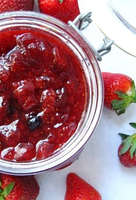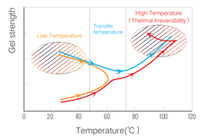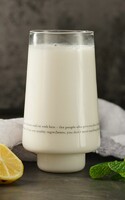Gellan Gum
Product Quick Detail
- FOB Price
- USD $200.00 / Piece
- Minimum Order
- 1
- Place Of Origin
- Jiangsu
- Packaging
- Airtight vacuumed aluminum foil bag
- Delivery
- 5-10 working days
Specifications
Gellan gum is a water-soluble anionic polysaccharide produced by the bacterium Sphingomonas elodea.
As a natural food additive, gellan gum was first approved for food use in Japan in 1988. It has subsequently been approved for food, non-food, cosmetic and pharmaceutical uses by many other
countries such as the US, Canada, China, Korea and the European Union etc. The organic gellan gum can be seen as a popular replacement for other gelling agents because it's effective in very small
amounts and produces a clear gel that isn't sensitive to heat.
Gellan gum ingredients are widely used as a thickener, binder, and stabilizer in different food applications. It mainly stabilizes the water-based gels, such as desserts and drinking jellies. Even
gellan replaces gelatin in some dairy products, such as yoghurt and sour cream in vegan items. As a professional gellan gum supplier, Yiming can provide you with high-quality gellan gum at
reasonable prices.
Key Benefits of Gellan Gum in Food and Beverages Industry
Safe food additive
Better acid-resisting and heat preservation
Reduce cholesterol and help get rid of the constipation issue
Provide better gel and consistency with a low dosage
Minimize blood sugar
Gellan Gum In Your Daily Life
Gellan Gum In Beverages
Beverages
Gellan Gum In Jelly
Jelly
Gellan Gum In Dairy Products
Dairy Products
Gellan Gum In Jam
Jam
Gellan Gum VS Agar
Agar
Agar is a mixture of agarose and agar gum. It is extracted from the cell walls of red algae, Gelidium Corneum and tengusa, and Gracilaria ogonori (Rhodophyceae), and is an amorphous translucent
product. It is sold on the market in powder form and mixed with culture medium and water for the growth of microorganisms, plant cells or tissues.
Gellan gum
Gellan gum is a water-soluble anionic polysaccharide, originally used as a substitute for agar in various clinical bacterial culture media. Structurally, it consists of a tetrasaccharide repeating
unit, which consists of two D-glucose residues, one L-rhamnose residue and one D-glucuronic acid residue.
According to the number of acetate groups attached to the polymer, gellan gum products are divided into two categories. Products with less acetic acid groups form hard, inelastic, and brittle gels,
while products with more acetic acid groups form soft and elastic gels.
Gellan gum can withstand high temperatures up to 120°C, and only needs half of its strength to achieve the gel strength equivalent to agar.
How to Use Gellan Gum
As a gelling agent, it imparts a creamy texture to desserts, gives the fillings of baked goods a jelly-like consistency, and reduces the possibility of certain delicacies (such as caramel pudding
or flame sorbet) melting when heated.
Gellan gum is also usually added to fortified fruit juices and plant milks to help stabilize supplemental nutrients such as calcium so that they are mixed in the beverage instead of gathering at
the bottom of the container.
This additive also has medical and pharmaceutical applications in tissue regeneration, allergy relief, dental care, bone repair, and drug manufacturing
If you want to know more types pf yoghurt enzymes, please visit our website.
- Country: China (Mainland)
- Business Type: Manufacturer
- Founded Year: 1998
- Address: No.333 Longhe Road, Taixing City, Jiangsu Province, China
- Contact: YIMING BIOTECH











